Beguiling beaches, striking mountains, and crystal-clear waters. Few countries are blessed with the diversity of landscapes that Montenegro offers – one day you could be kicking back on the beach with the kids, the next you could be up in the air, tandem paragliding over the coastline.
If you’re an adventurous family or group of friends wondering how to spend 1 week in Montenegro, then you might want to read this guide of 7 activities you can do over 7 days, depending on the type of holiday you’re looking for. All you need to do is make sure you bring the energy!
Skiing
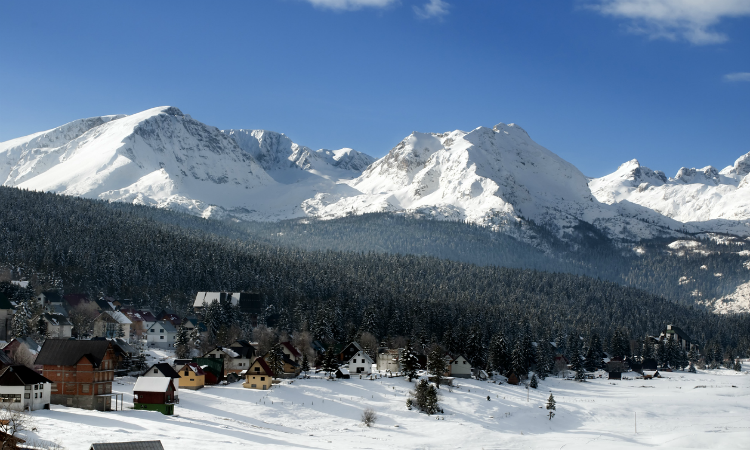
Savin Kuk Ski Resort
Now, we’re not advising that you align your beach holiday with Montenegro’s ski season (between mid-December to mid-March), but with the dramatic mountainous backdrop it has, it’s definitely worth considering spending 1 week in Montenegro on the slopes.
Hop in a car and head to the mountain range of Bjelasica, where you can find Kolašin 1450 (170km from Kotor and 80km from Podgorica). This might be the best-served resort in terms of facilities, as services offered include ski instructors, rental equipment, ski-lifts and a ski depot for kids and adults. With 25km of slopes, you’ll be traversing this fresh powder in no time.
If you’ve planned to spend a while in Durmitor National Park, give yourself a little more time to visit Savin Kuk Ski Resort (160km from Kotor and 120km Podgorica). With an altitude of 2,000 metres and 4.7km slopes, this is a popular choice amongst locals. The resort has recently had some money pumped into it to update its ski centre, add night reflectors for skiing after dusk, plus a modern cable car and improvements in the infrastructure, so there’s no better time to visit!
Other options to consider are Lokve Ski Centre, positioned amongst the mountain of Cmiljevica (240km from Kotor and 145km from Podgorica) and Hajla Ski Centre, which was re-opened in 2017 (245km from Kotor and 150km from Podgorica).
The beauty of Montenegro’s winter sports scene is that skiers and snowboarders alike will find solace in the fresh and unscathed snow, whilst not having to battle through drones of mixed abilities to secure a seat on a ski-lift. The cost of equipment doesn’t vary too much between resorts, so you’ll be pleased to know that daily ski equipment is generally priced around €10 for adults/€7 for children and daily lift passes can be purchased for €15 (approximate figures), so don’t ‘bail on that rail’ – it’s time to tick ‘ski in Montenegro’ off your bucket list!
Boat trips
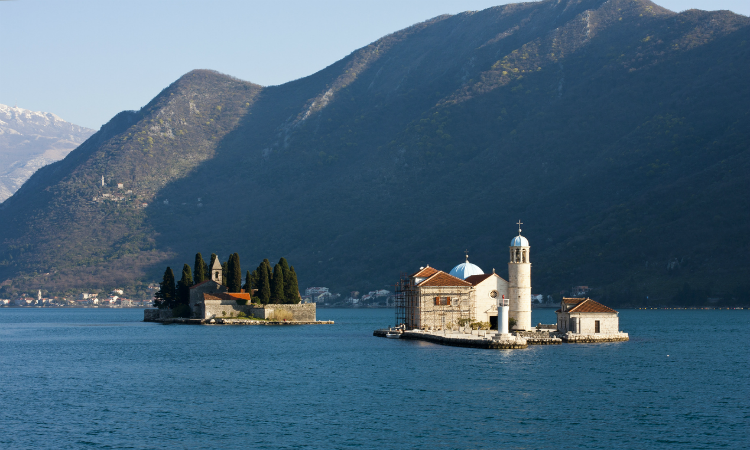
Our Lady of the Rocks
Setting sail on a boat trip along the dazzling Adriatic Coastline is a must when you hit this side of Europe, and if you’re in Boka Kotorska (Bay of Kotor), it’s the perfect way to see some of the more astonishing historical sites, monasteries and hidden bays that punctuate Boka’s coast.
Cultural trips starting in the Bay of Kotor will take you to the towns’ of Risan and Perast, the shore of Sveti Đorđe (St. George) and Gospa od Škrpijela (Our Lady of the Rocks), which are two renowned religious islands. These tours tend to continue around the winding gorges of the Orjen and Lovćen mountain ranges and through to Tivat and Herceg Novi.
If you’re looking for a more laidback boat trip, you can take a boat around Kotor or Lake Skadar, and spend your time plunging off the deck into crystal-clear waters, or you can hop on a wildlife-spotting trip around secluded coves in the hope of seeing dolphins and turtles.
Paragliding
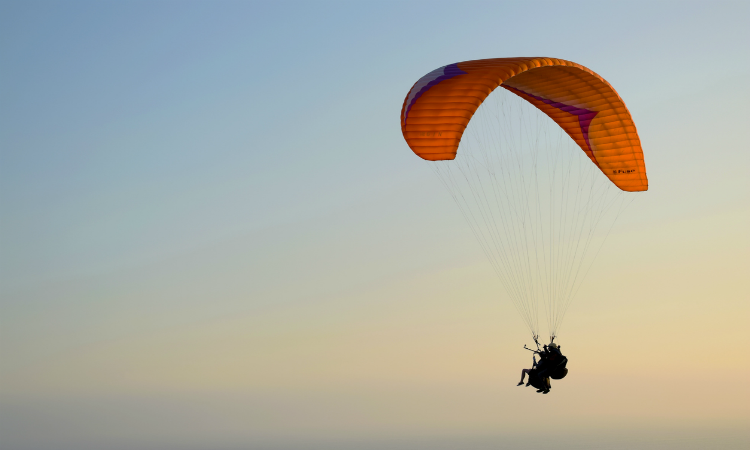
Jacques Cousteau once said, “The part of the Adriatic Coast belonging to Montenegro is the purest part of the Mediterranean”. Although Cousteau was more concerned with the secret underwater world of the Adriatic Coast, appreciating it from above can give a fresh perspective. So, if you’re going on holiday with an adrenaline junkie, there’s no better activity than taking to the skies. Some of the best sites for tandem paragliding are Lovćen, Buljarica, Vrsuta and Dizdarica. Not for the faint-hearted, these locations will launch you up to 1,000 metres above sea level, so you can witness first-hand the enormous scale and beauty of Montenegro’s landscapes.
Beach days
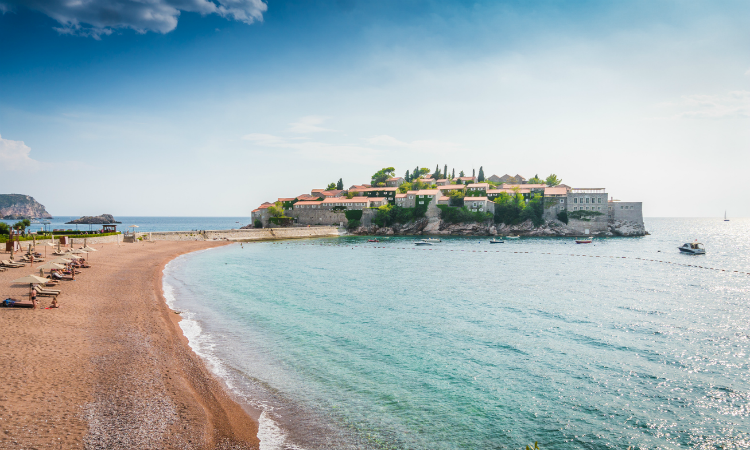
Sveti Stefan
It’s no secret that the Adriatic coast has some of the most striking beaches in Europe, so it shouldn’t come as a surprise that Montenegro brings its A-Game. Perhaps the most iconic of its beaches is Sveti Stefan, where a private islet lays in its distance. Part of the beach is privatised, but the other half seduces visitors with its pink sandy shores and crystalline waters.
A tidal wave of paddleboarding and kayaking has popped up all around Montenegro’s coast. And if you want to take to the water then head to Bay of Kotor, which has some of the most accessible grottos and islets. There are even tours where you can find out about the brief history of your surroundings, whilst visiting miniature and curious beaches.
If you’re short on time, but looking for a chilled-out beach day, we recommend Bajova Kula or Plavi Horizonti Plaža. Bajova Kula is a quieter pebble beach that is tucked away amongst lush greenery, which spills over from the Lovćen mountains. You can expect more of a traditional beach day experience at Plavi Horizonti Plaža. This 300-metre stretch of sand, in Tivat, is inclusive of families and you’ll find restaurants, parasols and beach beds. As a result of its rocky shoreline, there’s great visibility underwater, and although snorkelling in Montenegro won’t conjure the colourful visual effects you’d get in the Maldives, you’ll still have an abundance of anemones, crabs, fish and urchins to gaze at.
Canyoning and rafting
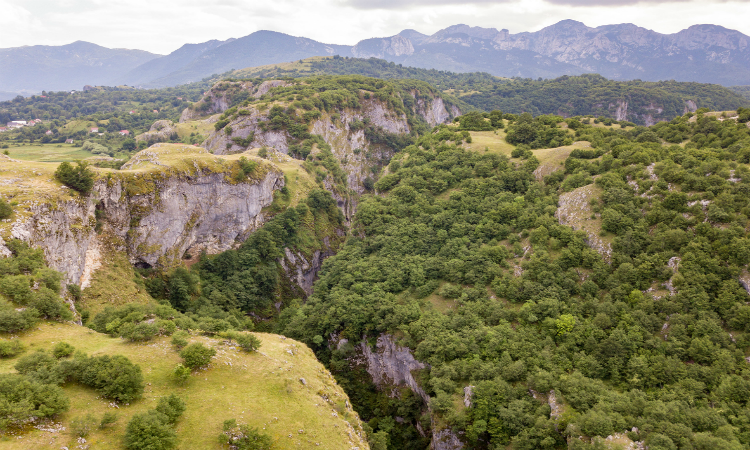
Nevidio Canyon
As previously mentioned, Montenegro is a mountainous country and with mountains, comes canyons and rivers. If you’re interested in exploring dramatic caves, jumping through waterfalls, traversing rocky walls and swaying over torrents, canyoning might be your new favourite hobby. It’s an experience that demands some physical strain, as you’ll be rappelling down a cliffside and climbing rock ledges – so an element of fitness is required.
Montenegro offers an excellent choice of canyons, particularly Skurda and Scurda Canyons’. Heading slightly inland to the mountains of Durmitor and Vojnik will expose the staggering Nevidio Canyon; not only is it a truly thrilling experience, there also aren’t many other ways to discover the wild side of Montenegro’s formidable landscape.
If you feel more at ease in a boat, but still looking for some thrills, a rafting tour down the Tara River could be for you. Allow a certified IRF (International Rafting Federation) Skipper to accompany you and a team, of between eight to ten, upon a descent of freshwater rapids. This is a truly awesome way to absorb the wilder side of Montenegro.
Hiking/National Parks/Wildlife Conservation
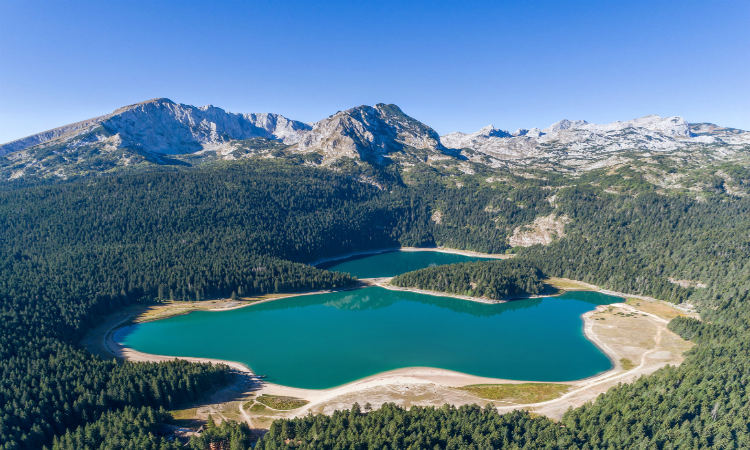
Lake Skadar
Many of us forget that the Balkan Peninsula is a sanctuary for wildlife and biodiversity. A huge amount of Montenegro is covered in forestry, which is a haven for trail seekers and lovers of the outdoors. If wildlife is your thing, you’ll be pleased to know that there is an abundance of it in Montenegro’s wildland. It’s not uncommon to see Roebuck, Fallow and Red Deer skipping through woodland. If you look a little closer, you’ll be certain to see the curious Chamois or marvellous Mouflon. However, what most explorers are keen to catch a glance of is the revered Balkan Lynx, a majestic and critically endangered animal. Keep an eye out for Balkan/European Green Belt signage, as this will indicate certified trails.
The closest National Park to Tivat is Lovćen, from where the county’s name stems. Lovćen National Park not only has special views of the country’s magnificent landscape, but it also holds historical importance as Prince Njegoš, a prominent Montenegrin poet and philosopher, was encased in a Mausoleum upon his death within Lovćen. Hikers will also encounter former military strongholds dotted across this protected land, ranging from the Balkan defence of the Ottoman offensive up to the Great War. So, make sure you don’t neglect a trip to ‘Grna Gora’ (Black Mountain), in the heart of Montenegro.
If you’ve seen photographs of Montenegro’s iconic countryside, it’s probably Lake Skadar. This huge National Park not only boasts the largest lake in Southern Europe, it also boarders some of Albania’s Ramsar wetlands. Its winding rivers curl around its mountainous countryside, which is often flooded, resulting in dream-conjuring and entrancing floating meadows of flora. Moreover, Skadar Valley is crucial to the sustainability of 270 breeds of birds, the majority of which are migratory. Therefore, it’s not uncommon to see bird watchers and people fishing there. Boat tours are available, particularly in the summer months, and are a good way to break up any hiking you have planned.
Durmitor is the last of the National Parks to check out on our list. Situated in Montenegro’s North West and part of the Dinaric Alps, you are certain to be blown away by the contrast between rolling green meadows and formidably impressive snow-laden mountains. The closer you get to Bosnia’s border, the better chance you’ll have of seeing brown bears and wolves.
Horseback Riding
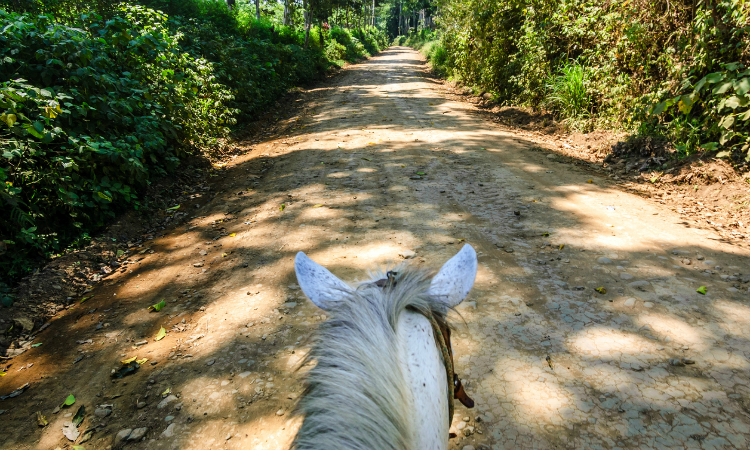
Horseback riding is a great way to discover the countryside and there are several fine trails in Oraovica, near Podgorica, which showcase forests and lakes… a real off-the-beaten-track experience! A particular highlight is Lake Komani, where mountains stretch across Montenegro and Albania and old roads and relics are still intact along several routes. If you’re keen to spice up your holiday and make it a little more romantic, then beach rides are a must, we recommend Velika Plaza (Long Beach) in Ulcinj for stunning scenery and a fresh ocean breeze.
If you’re looking for a combination of culture, R&R and activities then Montenegro has got you covered. Pick and choose from the list of recommendations above or extend your originally planned 1 week in Montenegro to a couple so you can tick them all off your list. Have a look through our selection of holiday villas in Montenegro, or chat to our concierge team for help.




Leave a Reply